Abstract
12 patients with Wiskott-Aldrich syndrome were treated with therapeutic doses of transfer factor in an attempt to induce cellular immunity. Clinical improvement was noted after transfer factor therapy in 7 of the 12 patients treated. Because this disease has a variable course and temporary spontaneous improvement can occur, the observed improvement cannot necessarily be attributed to the transfer factor. However, in two patients repeated remissions consistently followed transfer factor administration on repeated occasions. This included freedom from infections, regression of splenomegaly, and clearing of eczema. An unexpected finding was a decrease in bleeding in 3 of the 10 patients who had bleeding. Conversion of skin reactivity was obtained in all seven patients who clinically seemed to respond to transfer factor. In vitro studies performed after the administration of transfer factor demonstrated that the lymphocytes of the patients now produced migration inhibitory factor in response to appropriate test antigens, but did not undergo increased radioactive thymidine incorporation in response to the same antigens. A defect in the monocyte IgG receptors has been found in certain patients with the disease, and the current study shows that all patients with defective monocyte IgG receptors responded to transfer factor, whereas only one patient with normal receptors showed any response. This test may thus prove to be useful in predicting the results of transfer factor therapy in patients with Wiskott-Aldrich syndrome, although evaluation of a larger series of patients will be necessary to confirm this point. We conclude that cellular immunity can be induced, that there appears to be clinical benefit in certain patients with Wiskott-Aldrich syndrome by the use of transfer factor, and that this mode of therapy warrents trial in these patients and others with defects of cellular immunity.
Full text
PDF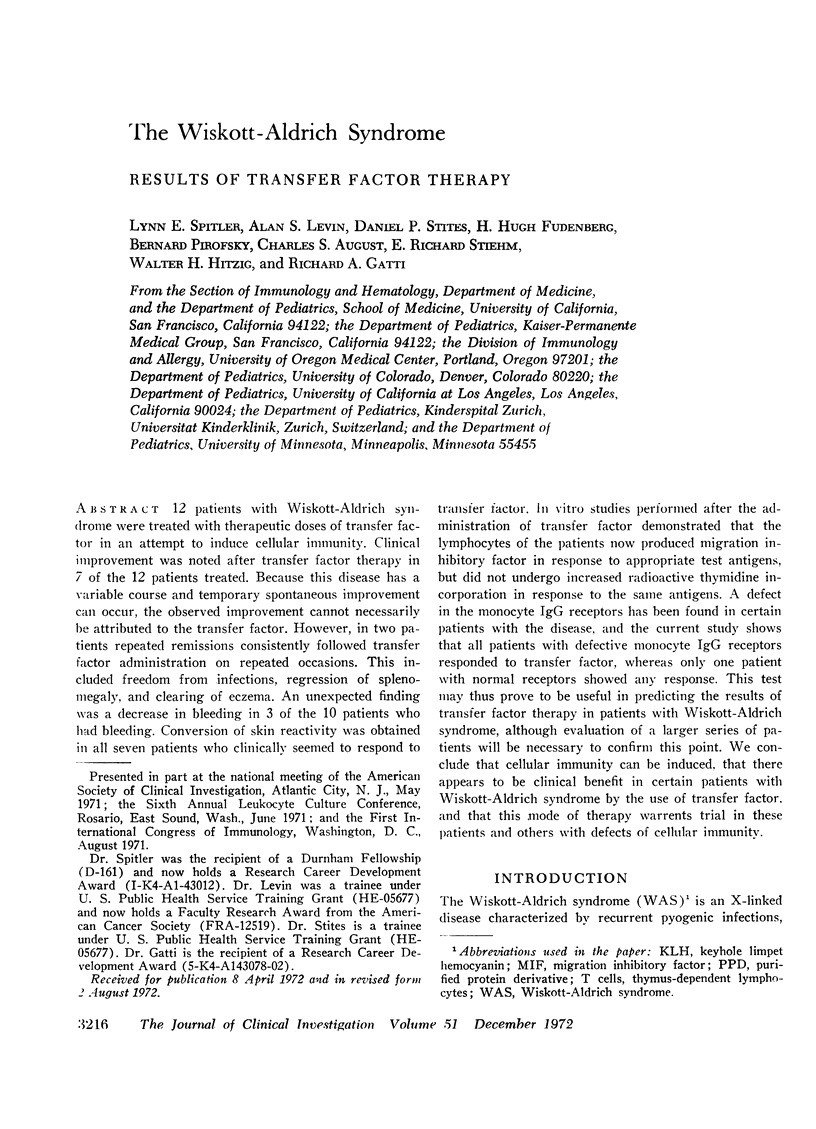
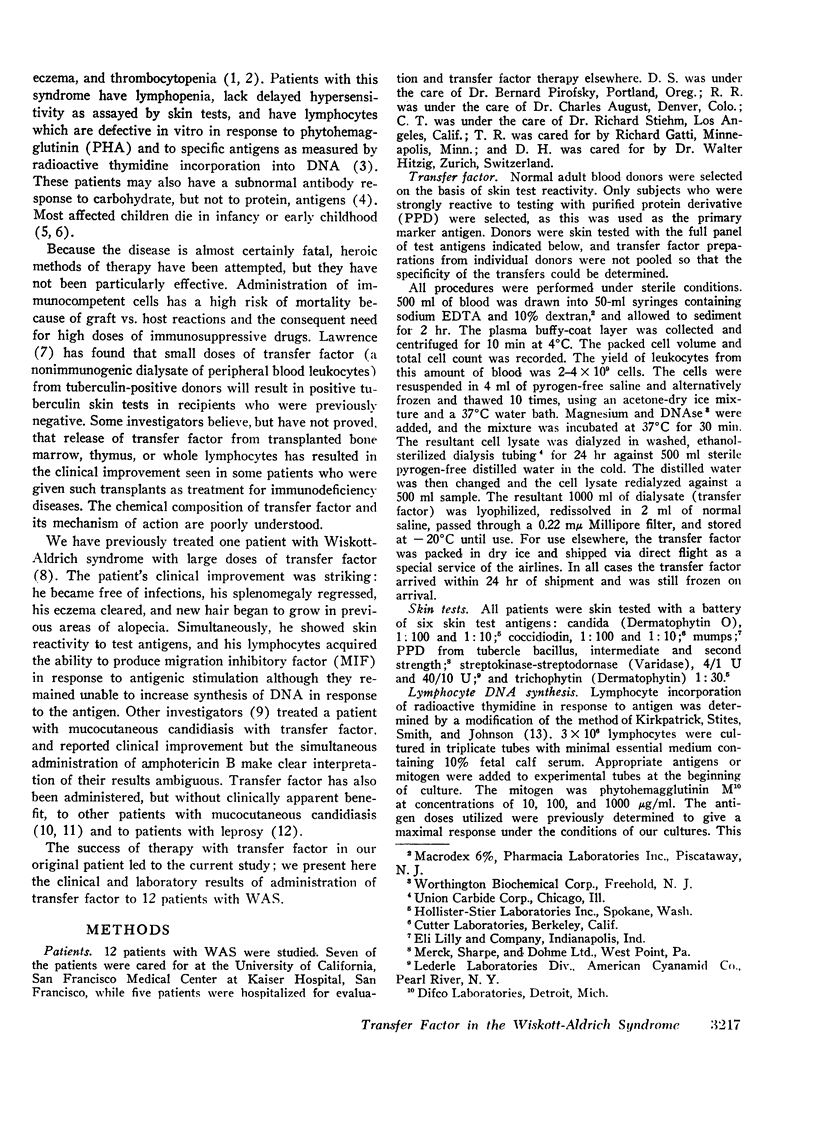
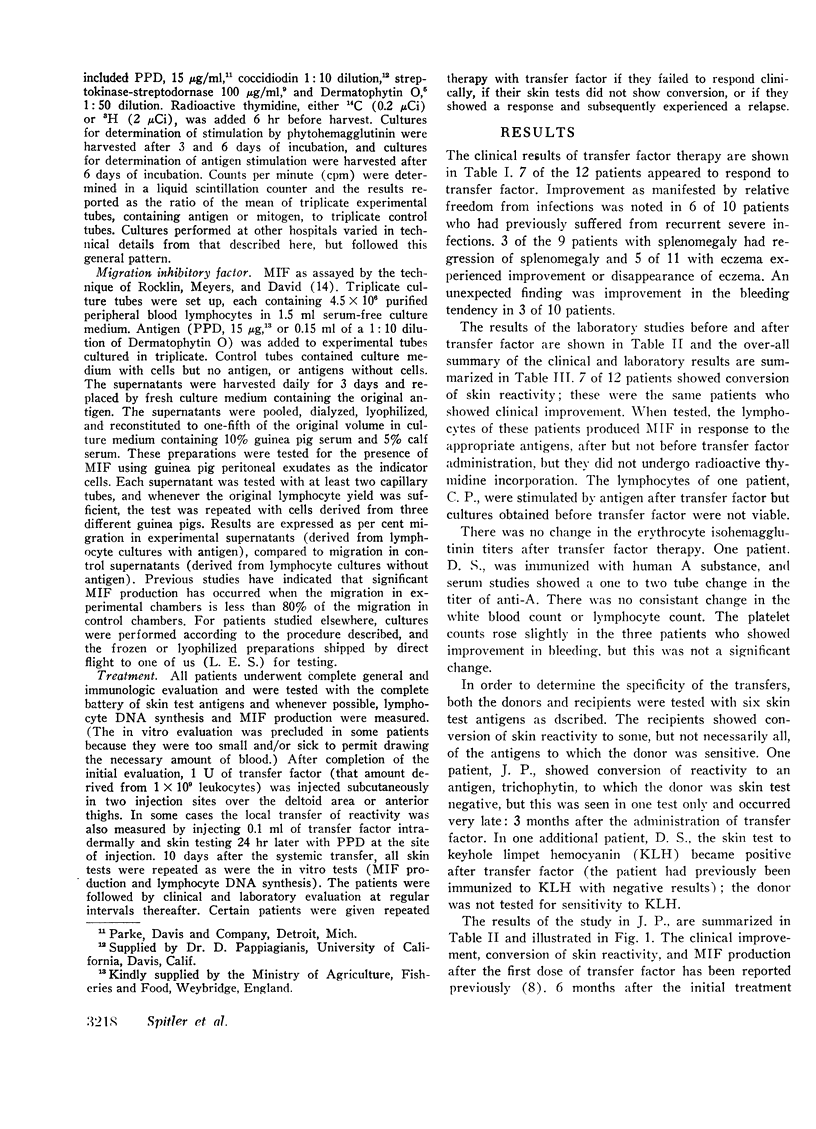
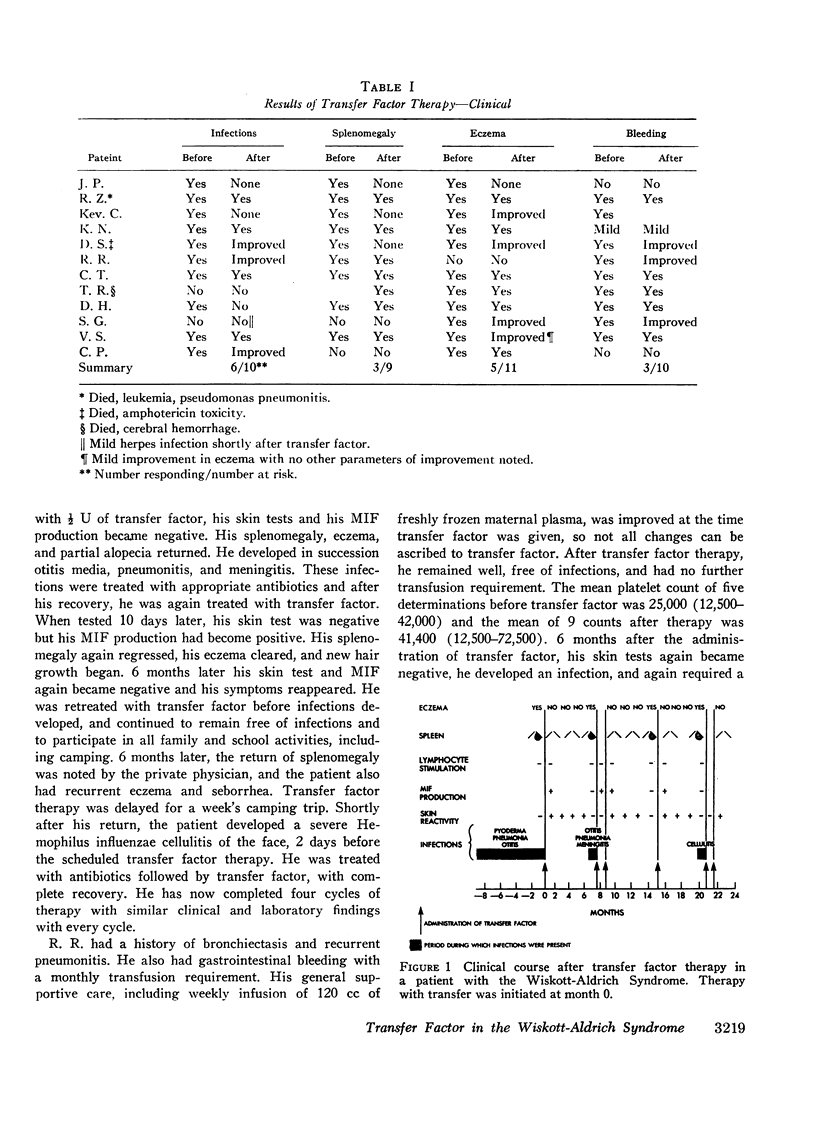
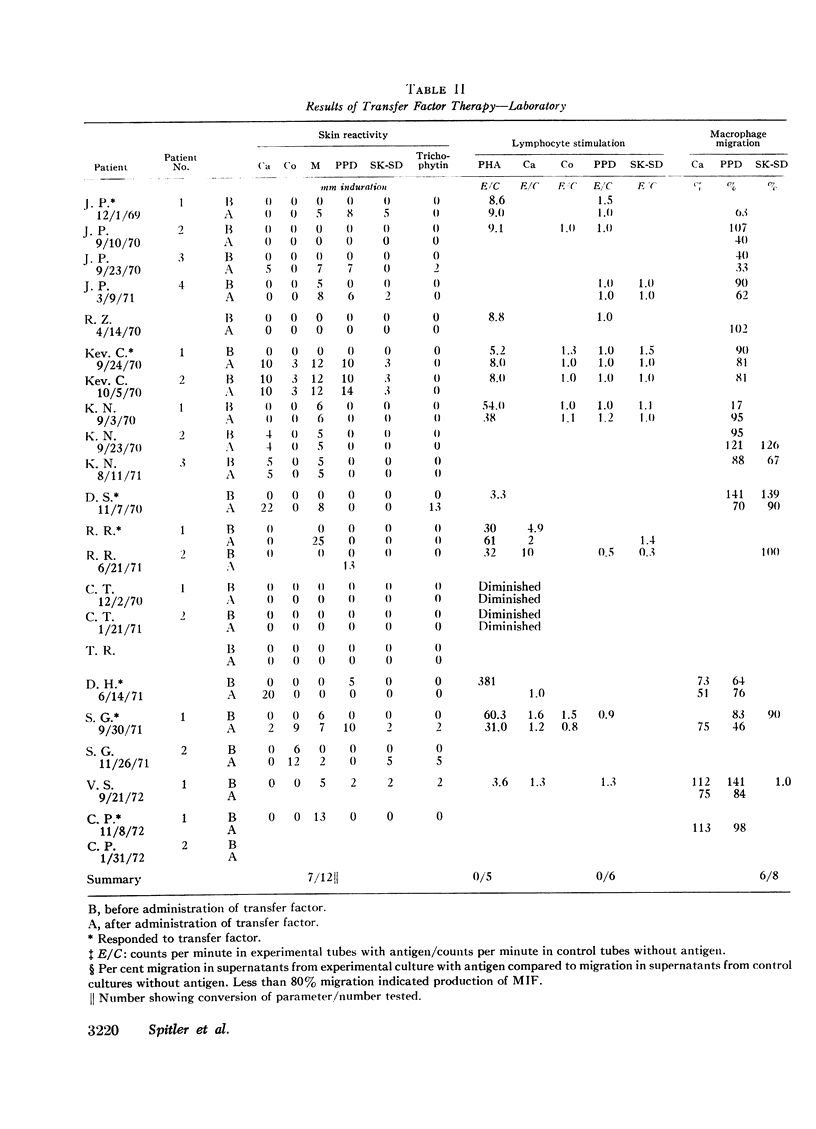
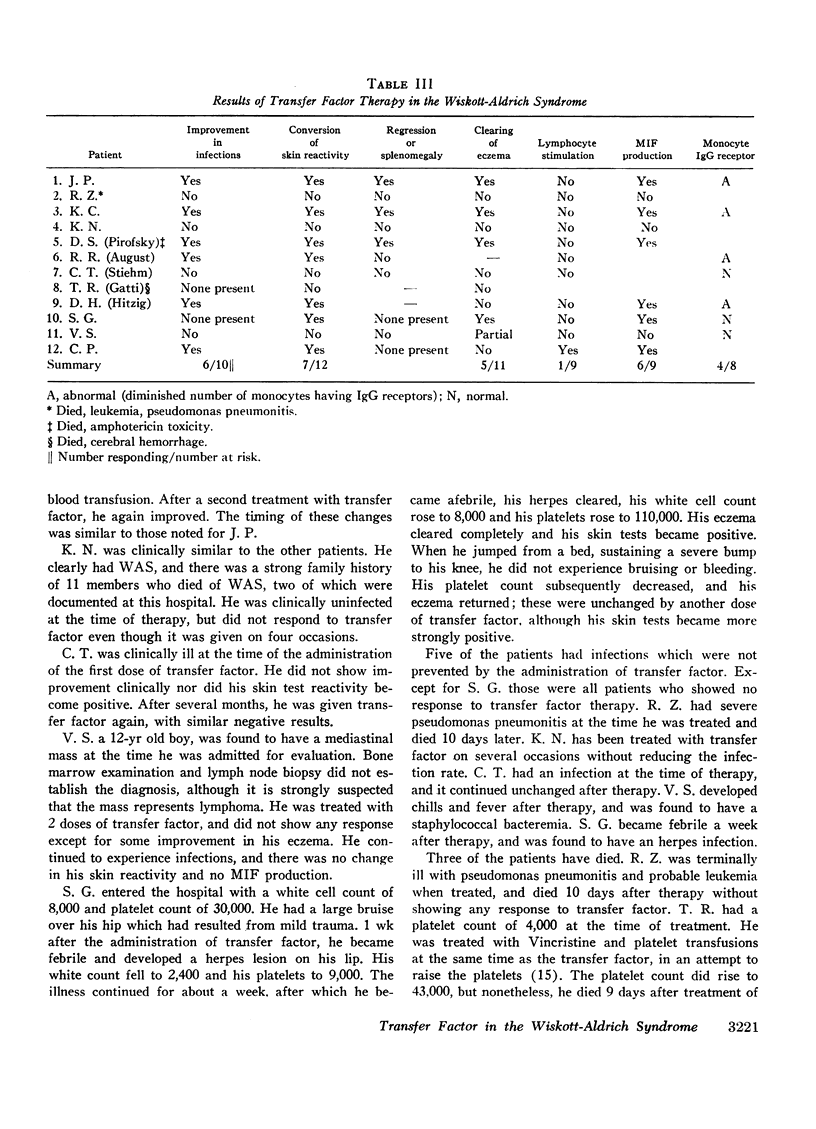
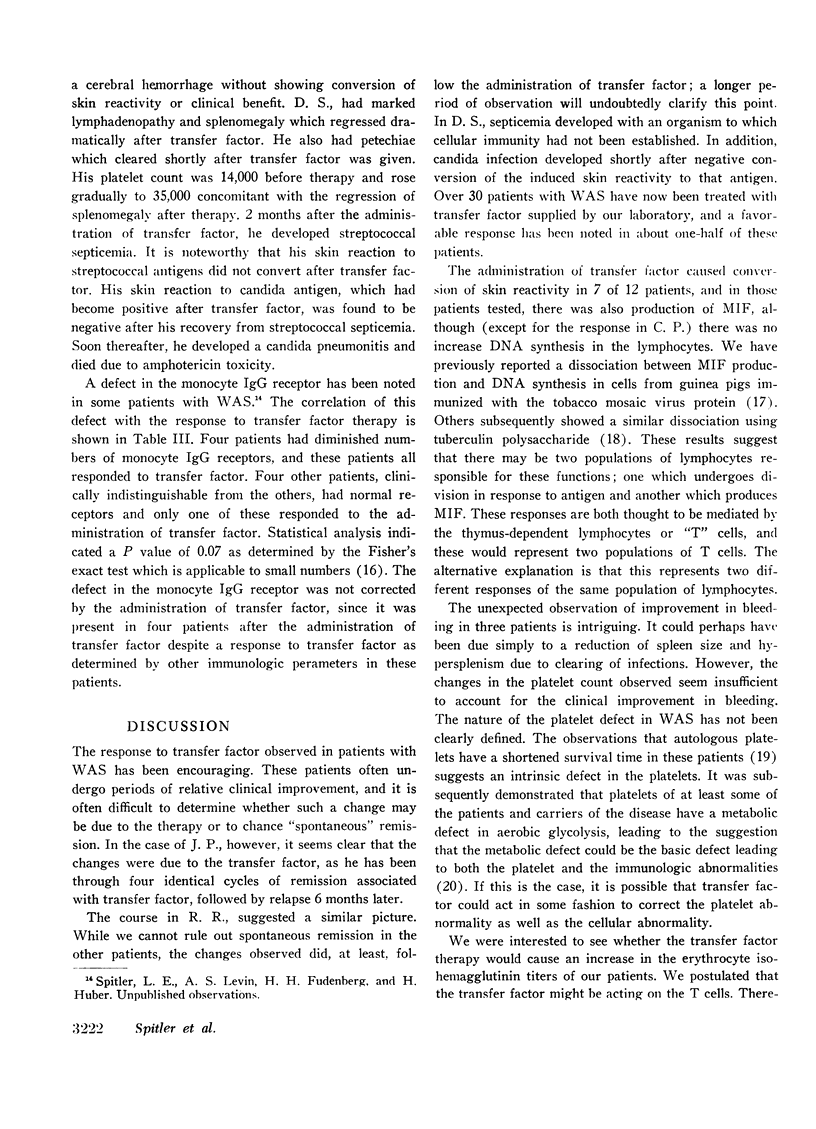
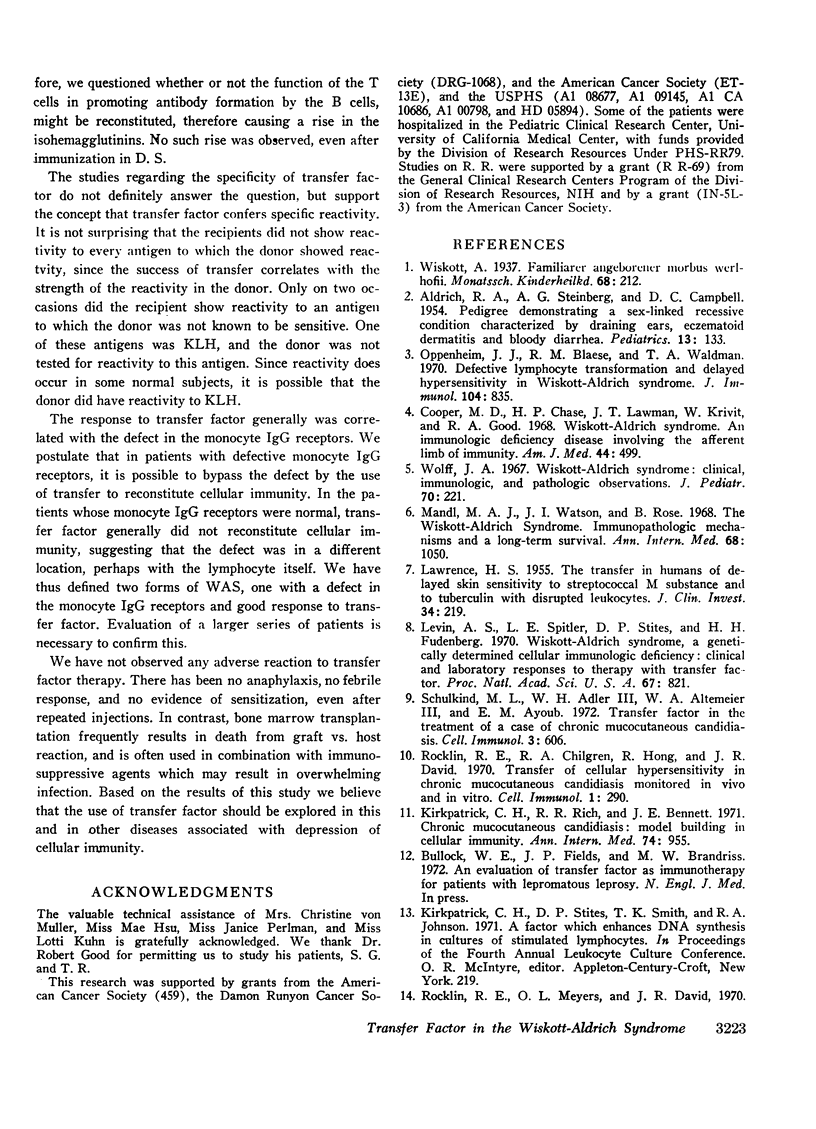
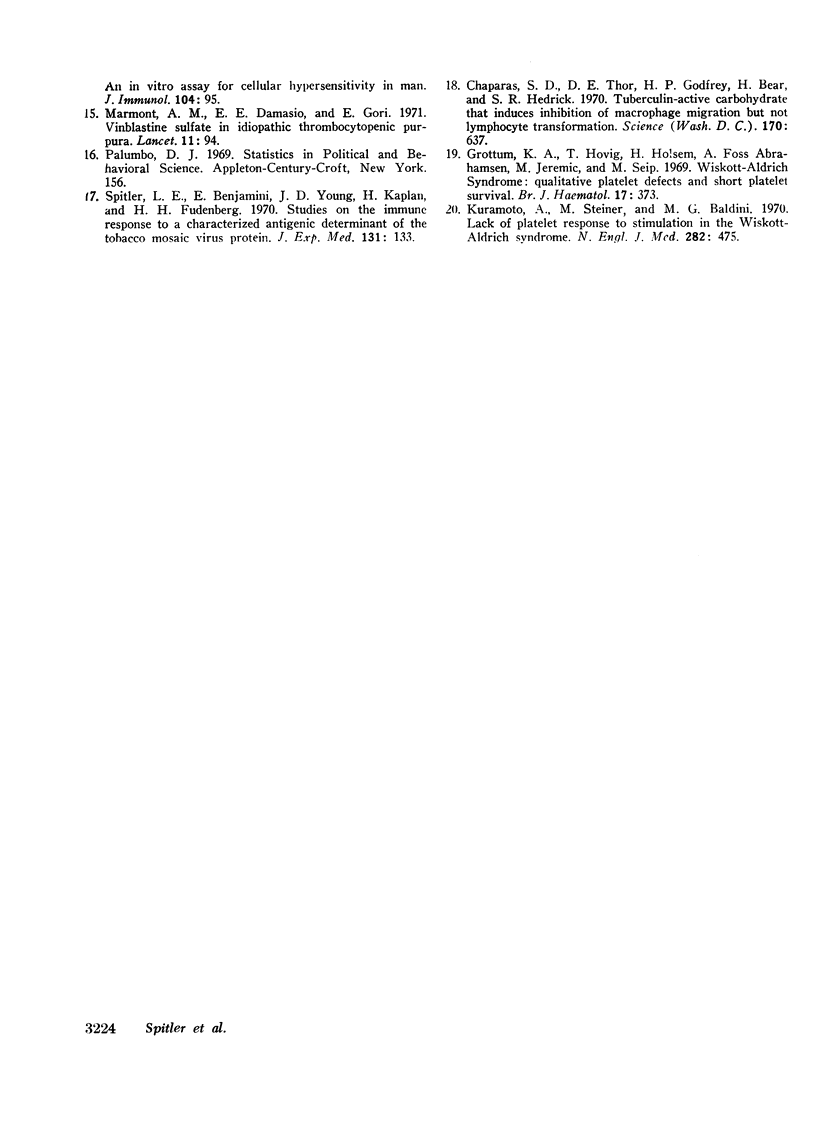
Selected References
These references are in PubMed. This may not be the complete list of references from this article.
- ALDRICH R. A., STEINBERG A. G., CAMPBELL D. C. Pedigree demonstrating a sex-linked recessive condition characterized by draining ears, eczematoid dermatitis and bloody diarrhea. Pediatrics. 1954 Feb;13(2):133–139. [PubMed] [Google Scholar]
- Chaparas S. D., Thor D. E., Godfrey H. P., Baer H., Hedrick S. R. Tuberculin-active carbohydrate that induces inhibition of macrophage migration but not lymphocyte transformation. Science. 1970 Nov 6;170(3958):637–639. doi: 10.1126/science.170.3958.637. [DOI] [PubMed] [Google Scholar]
- Cooper M. D., Chae H. P., Lowman J. T., Krivit W., Good R. A. Wiskott-Aldrich syndrome. An immunologic deficiency disease involving the afferent limb of immunity. Am J Med. 1968 Apr;44(4):499–513. doi: 10.1016/0002-9343(68)90051-x. [DOI] [PubMed] [Google Scholar]
- Gröttum K. A., Hovig T., Holmsen H., Abrahamsen A. F., Jeremic M., Seip M. Wiskott-Aldrich syndrome: qualitative platelet defects and short platelet survival. Br J Haematol. 1969 Oct;17(4):373–388. doi: 10.1111/j.1365-2141.1969.tb01383.x. [DOI] [PubMed] [Google Scholar]
- Kirkpatrick C. H., Rich R. R., Bennett J. E. Chronic mucocutaneous candidiasis: model-building in cellular immunity. Ann Intern Med. 1971 Jun;74(6):955–978. doi: 10.7326/0003-4819-74-6-955. [DOI] [PubMed] [Google Scholar]
- Kuramoto A., Steiner M., Baldini M. G. Lack of platelet response to stimulation in the Wiskott-Aldrich syndrome. N Engl J Med. 1970 Feb 26;282(9):475–479. doi: 10.1056/NEJM197002262820904. [DOI] [PubMed] [Google Scholar]
- LAWRENCE H. S. The transfer in humans of delayed skin sensitivity to streptococcal M substance and to tuberculin with disrupted leucocytes. J Clin Invest. 1955 Feb;34(2):219–230. doi: 10.1172/JCI103075. [DOI] [PMC free article] [PubMed] [Google Scholar]
- Levin A. S., Spitler L. E., Stites D. P., Fudenberg H. H. Wiskott-Aldrich syndrome, a genetically determined cellular immunologic deficiency: clinical and laboratory responses to therapy with transfer factor. Proc Natl Acad Sci U S A. 1970 Oct;67(2):821–828. doi: 10.1073/pnas.67.2.821. [DOI] [PMC free article] [PubMed] [Google Scholar]
- Mandi M. A., Watson J. I., Rose B. The Wiskott-Aldrich syndrome. Immunopathologic mechanisms and a long-term survival. Ann Intern Med. 1968 May;68(5):1050–1059. doi: 10.7326/0003-4819-68-5-1050. [DOI] [PubMed] [Google Scholar]
- Marmont A. M., Damasio E. E., Gori E. Vinblastine sulphate in idiopathic thrombocytopenic purpura. Lancet. 1971 Jul 10;2(7715):94–94. doi: 10.1016/s0140-6736(71)92067-8. [DOI] [PubMed] [Google Scholar]
- Oppenheim J. J., Blaese R. M., Waldmann T. A. Defective lymphocyte transformation and delayed hypersensitivity in Wiskott-Aldrich syndrome. J Immunol. 1970 Apr;104(4):835–844. [PubMed] [Google Scholar]
- Rocklin R. E., Chilgren R. A., Hong R., David J. R. Transfer of cellular hypersensitivity in chronic mucocutaneous candidiasis monitored in vivo and in vitro. Cell Immunol. 1970 Sep;1(3):290–299. doi: 10.1016/0008-8749(70)90050-x. [DOI] [PubMed] [Google Scholar]
- Schulking M. L., Adler W. H., 3rd, Altemeier W. A., 3rd, Ayoub E. M. Transfer factor in the treatment of a case of chronic mucocutaneous candidiasis. Cell Immunol. 1972 Apr;3(4):606–615. doi: 10.1016/0008-8749(72)90122-0. [DOI] [PubMed] [Google Scholar]
- Spitler L., Benjamini E., Young J. D., Kaplan H., Fudenberg H. H. Studies on the immune response to a characterized antigenic determinant of the tobacco mosaic virus protein. J Exp Med. 1970 Jan 1;131(1):133–148. doi: 10.1084/jem.131.1.133. [DOI] [PMC free article] [PubMed] [Google Scholar]
- Wolff J. A. Wiskott-Aldrich syndrome: clinical, immunologic, and pathologic observations. J Pediatr. 1967 Feb;70(2):221–232. doi: 10.1016/s0022-3476(67)80417-7. [DOI] [PubMed] [Google Scholar]


